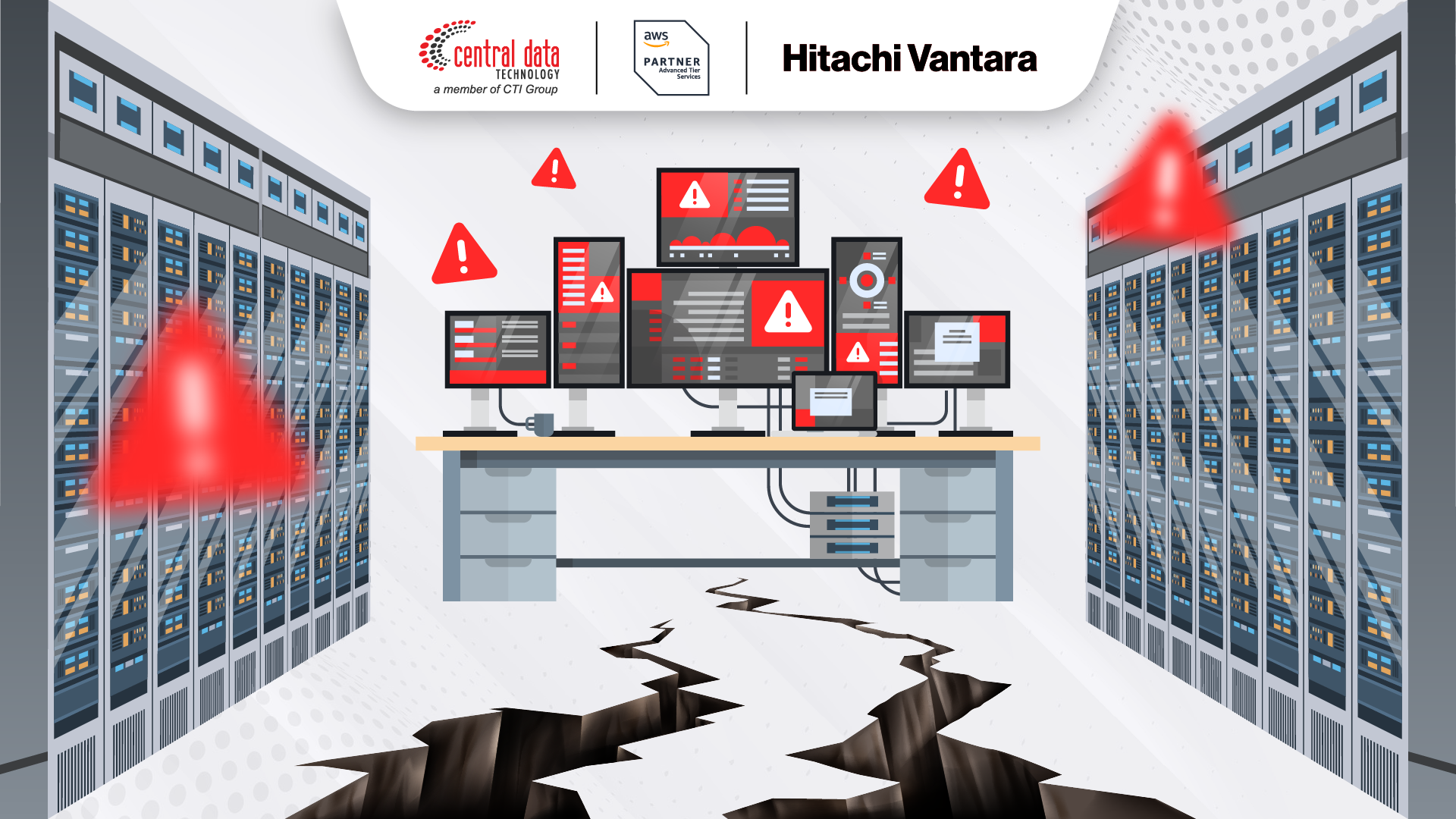
At the end of July 2025, a powerful 8.7-magnitude earthquake struck Russia’s Kamchatka region. Though the epicenter was far from Indonesia, its ripple effects spread across continents, triggering tsunami warnings around the Pacific and raising new concerns about global supply chain stability.
In today’s hyperconnected world, a disaster in one part of the globe can spark a chain reaction across multiple sectors, including business operations and digital infrastructure. Even a momentary disruption in one region’s IT system can affect partners and customers worldwide. This event serves as a stark reminder: no matter how robust your systems are, business resilience ultimately depends on how prepared you are for the unexpected.
That’s exactly why Business Continuity and Disaster Recovery (BCDR) can no longer be considered optional. With the growing risks of natural disasters and cyberattacks, BCDR is now a foundational element for modern businesses to survive and thrive amid uncertainty.
What Is Business Continuity and Disaster Recovery?
Business Continuity and Disaster Recovery (BCDR) is a strategic approach designed to help businesses stay operational or recover quickly in the event of a major disruption. Although they’re often mentioned together, BC and DR serve different yet complementary purposes.
Business Continuity (BC) focuses on keeping essential operations running during and after a crisis, aiming to minimize downtime and maintain core services with little to no interruption.
Disaster Recovery (DR), on the other hand, centers on technical recovery restoring affected data, systems, and IT infrastructure after a disruption.
Together, these two pillars help businesses build end-to-end resilience, not just to recover after the storm, but to keep the heart of the business beating throughout it.
How Does a BCDR Strategy Work?
A strong BCDR (Business Continuity and Disaster Recovery) strategy is built on two complementary tracks: Business Continuity and Disaster Recovery. While they share the same ultimate goal, keeping your business running, they approach it from different angles.
Business Continuity takes a proactive stance. It’s about keeping essential operations up and running even as a disaster unfolds. This involves identifying critical roles, preparing alternative workflows, and utilizing supporting technology to ensure operational resilience.
Disaster Recovery, on the other hand, is reactive. It focuses on restoring IT infrastructure and data after an incident. Think system backups, data recovery processes, and shifting workloads to backup servers to reduce downtime and minimize losses.
Both strategies rely heavily on two key metrics: Recovery Time Objective (RTO), how fast systems must be back online, and Recovery Point Objective (RPO), how much data loss is tolerable during recovery
The balance between these two defines how prepared a business is when disaster strikes.
Why the Russia Earthquake Should Be a Wake-Up Call for BCDR Strategy
The recent massive earthquake in the Kamchatka Peninsula, Russia, isn’t just a local incident; it’s a global warning. This region is home to critical subsea cables connecting Russia, East Asia, and North America. A disruption here can instantly affect international data traffic and the stability of cloud services worldwide.
Reports have already cited disruptions in internet connectivity and delays in cross-regional logistics. If the situation escalates, companies in Indonesia, especially those relying on international cloud services, global ERP systems, or East Asia-based supply chains, could feel the impact firsthand.
Yet, many businesses still assume disasters only matter when they happen within their territory. This mindset underestimates interconnected risks, when a single point of failure across a global system can trigger ripple effects across industries and countries.
From e-commerce to manufacturing, every sector is now part of a digitally intertwined ecosystem. That means a disruption in one location can bring global consequences.
This earthquake is a timely reminder: in today’s hyper-connected world, distance doesn’t shield your business from disruption. Only a robust BCDR strategy can.
Read More: What is Disaster Recovery: How it Works, Types and Benefits for Business
Tech-Powered BCDR: Building a Stronger, Smarter Defense
In an increasingly unpredictable world, relying solely on manual disaster plans or outdated emergency playbooks is no longer enough. To protect business continuity effectively, organizations need modern, tech-driven strategies that are structured, agile, and ready to respond when disruption strikes.
Central Data Technology (CDT) recommends two powerful BCDR solutions that help businesses recover more quickly and maintain operations, even in the face of unexpected challenges.
AWS Elastic Disaster Recovery: Rapid Recovery with Minimal Downtime
One of CDT’s go-to recommendations is AWS Elastic Disaster Recovery, a reliable solution designed to drastically reduce downtime and data loss by enabling quick, seamless recovery of applications from both on-premises and cloud environments.
Here’s how it works: your source server data is securely replicated into a low-cost staging area in your AWS account, located in the region of your choice. This staging setup uses minimal resources, just enough to keep replication going without burdening your infrastructure. The best part? You can run recovery tests anytime without interrupting live operations.
When disaster hits, applications can be restored within minutes. Businesses can choose to temporarily run operations on AWS or fail back to their original systems once stability is restored. This approach offers unmatched flexibility without inflating operational costs.
Hitachi Vantara: Seamless BCDR for Complex IT Environments
For businesses operating in hybrid or multi-cloud environments, CDT offers a more comprehensive solution: Hitachi Vantara. This platform is designed to support complex infrastructures with end-to-end data protection, high system availability, and integrated automation for fast recovery.
Thanks to cross-site replication and automated failover capabilities, your critical business services can continue uninterrupted, even during major disruptions. Everything can be managed centrally through a streamlined orchestration platform, making the recovery process more efficient.
Hitachi Vantara also offers seamless integration with a wide range of cloud platforms and enterprise systems. That makes it a perfect fit for highly regulated industries that demand operational reliability, compliance, and full visibility into mission-critical systems.
Read More: 90% Business Fail to Recover from Crisis without Business Continuity Planning
Don’t Wait for a Crisis, Start Building Your BCDR Strategy with CDT
A robust, technology-backed Business Continuity and Disaster Recovery (BCDR) strategy is no longer optional, it’s essential. With solutions from AWS and Hitachi Vantara delivered by Central Data Technology (CDT), a subsidiary of CTI Group, your organization can establish a fast, efficient, and future-ready disaster recovery plan.
Ready to protect your business from the unexpected? Talk to CDT’s expert team and build a BCDR strategy that’s resilient, reliable, and tailored to your needs.
Contact us today because the best time to prepare is before disaster strikes.
Author: Wilsa Azmalia Putri – Content Writer CTI Group

